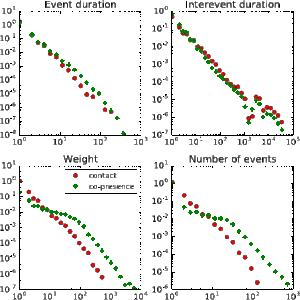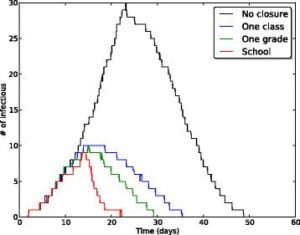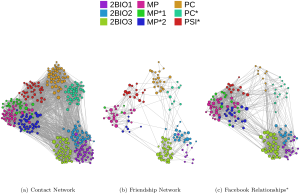Through a publication in EPJ Data Science, we have released several new data sets of different types. These datasets can be found on Zenodo.
On the one hand, we have released new temporally resolved data on face-to-face interactions collected in
- the SFHH scientific conference held in 2009, with more than 400 participants to the data collection, a data set that we have already used in several publications such as “Simulation of an SEIR infectious disease model on the dynamic contact network of conference attendees”
- an office building (InVS, French Health observatory) in 2015 (following a first data collection performed in 2013, published here). This data set contains also metadata, i.e., to which department each individual belongs.
In addition, we release data sets describing the temporally resolved co-location of individuals, where co-location of two individuals at time t means that the same exact set of readers have received signals from both individuals at time t. Data can be found on our website or on Zenodo.
Obviously, the co-location data corresponds to a coarser spatial resolution than the face-to-face data, and we have compared the corresponding data in terms of structure and when used in data-driven simulations of disease propagation models in our paper.
![SocioPatterns [logo]](http://www.sociopatterns.org/wp-content/themes/sp2/images/header_logo.png)




